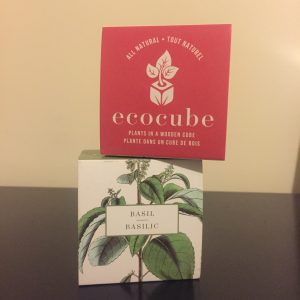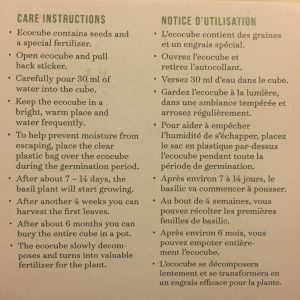I was walking around Indigo the other day and came across an interesting product: the Ecocube by Feel Green.
The Ecocube is a planter that contains seed and fertilizer. There’s a huge variety of fruits and plants to grow – all you have to do is add water and let it grow. Upon first glance, I thought this was just a regular planter. I’ve seen plenty of these around; users add water into the planter, and when the seed starts to sprout, we transfer the plant over to a pot.
However, the Ecocube is different. Looking at the instructions below, we can find that you can bury the entire Ecocube in the pot, and it would slowly decompose and turn into fertilizer for the plant.
I don’t plant a lot (I just have a mini cactus that doesn’t need much attention!), and don’t normally buy these products. But the Ecocube totally grabbed my attention. Not only does this innovation limit down on the waste by having a decomposable exterior, but the box also provides benefits to the plant by being a fertilizer.
I just had one concern – reliability. Wanting to learn more about this product, I visited the Feel Green website. They also carry the Ecocan, which features the same innovation as the Ecocube. However, all the company vouches for is that the product “will slowly decompose and turn into valuable fertilizer for the plant”.
What does this mean? Personally, I could have benefitted from more information about the research done into this innovation. By not having any more details about how the Ecocube and Ecocan decompose, I automatically become more skeptical about the validity of this product.
For any of you who have green thumbs, check out the Ecocube and Ecocan! What do you think about this product? What about the lack of information provided about the research and development?

